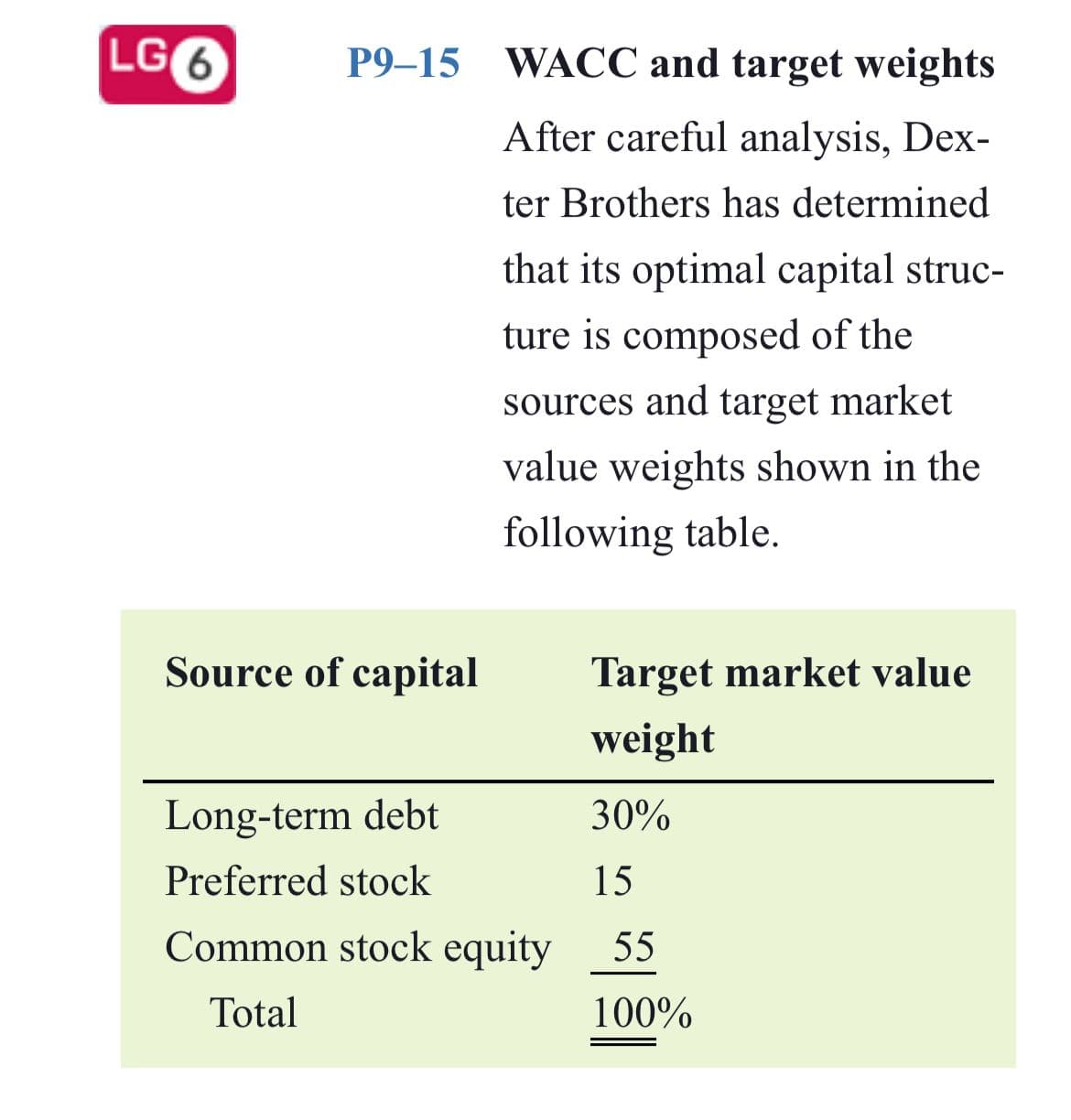1) Cost of common stock equity: CAPM Brigham Jewellery Corporation common stock has a beta, β, of 1.8. The risk-free rate is 5%, and the market return is 16%. Determine Brigham’s cost of common stock equity using the CAPM. 2) The cost of debt is 4.2%, the cost of preferred stock is 9.5%, the cost of retained earnings is 13.0%, and the cost of new common stock is 15.0%. All are after-tax rates. The company’s debt represents 25%, the preferred stock represents 10%, and the common stock equity represents 65% of total capital on the basis of the current market values of the three components. The company expects to have a significant amount of retained earnings available and does not expect to sell any new common stock. (See the attached photo) a.Calculate the WACC on the basis of historical market value weights. b.Calculate the WACC on the basis of target market value weights. c.Compare the answers obtained in parts a and b. Explain the differences.
1) Cost of common stock equity: CAPM Brigham Jewellery Corporation common stock has a beta, β, of 1.8. The risk-free rate is 5%, and the market return is 16%.
Determine Brigham’s cost of common stock equity using the CAPM.
2) The cost of debt is 4.2%, the cost of
a.Calculate the WACC on the basis of historical market value weights.
b.Calculate the WACC on the basis of target market value weights.
c.Compare the answers obtained in parts a and b. Explain the differences.

Trending now
This is a popular solution!
Step by step
Solved in 4 steps







